We’ve all seen them cruising down suburban streets and highways – those versatile wagon cars that perfectly blend family practicality with everyday style. These elongated beauties have been winning hearts for decades, offering something that SUVs and sedans often can’t match: the perfect balance of cargo space, fuel efficiency, and driving dynamics.
Whether you’re hauling kids to soccer practice, loading up for a weekend camping trip, or simply need extra room for daily errands, wagon cars deliver unmatched versatility. From classic American station wagons of the ’70s to today’s sleek European estates, these vehicles have evolved into sophisticated machines that don’t compromise on performance or comfort.
We’re diving deep into the industry of wagon cars to explore why they’re making such a strong comeback in today’s automotive industry. You’ll discover the top models, key benefits, and exactly why these practical performers might be the perfect solution for your driving needs.
What Are Wagon Cars and Why They Matter
Station wagons represent automotive versatility at its finest, combining the best elements of sedans and SUVs into one cohesive package. We’re witnessing a renaissance in wagon appreciation as drivers rediscover their unique advantages.
Defining the Station Wagon Body Style
Station wagons feature an extended roofline that continues over the rear cargo area, creating a distinctive silhouette that maximizes interior space. We identify these vehicles by their characteristic D-pillar that extends further back than traditional sedans. The rear hatch opens upward rather than outward like a sedan trunk, providing easier access to cargo areas.
Most wagon cars maintain the same wheelbase as their sedan counterparts while adding roughly 12 to 18 inches of length behind the rear wheels. We see this design approach in models like the Volvo V60, which shares its platform with the S60 sedan but extends the cargo area significantly. The result creates a lower center of gravity compared to SUVs while offering substantially more cargo capacity than sedans.
Key Features That Set Wagon Cars Apart
Ground clearance in wagon cars typically measures 5 to 7 inches, positioning them lower than crossovers but higher than sports cars for optimal road handling. We appreciate how this height allows for comfortable entry and exit while maintaining superior aerodynamics compared to taller vehicles.
Rear passenger space often exceeds that of comparable sedans due to the extended cabin design. We observe that models like the Audi A4 Allroad provide 37.4 inches of rear legroom, matching or surpassing many luxury sedans. The flat load floor behind the rear seats creates a practical cargo area that accommodates everything from groceries to sporting equipment.
Third row seating appears in larger wagon variants, transforming them into genuine seven passenger vehicles. We find examples in the Mercedes E-Class wagon and BMW 5 Series Touring, which offer optional jump seats for occasional use.
The Appeal of Extended Cargo Space
Cargo capacity in modern wagon cars ranges from 25 to 75 cubic feet with rear seats folded, significantly outperforming sedan trunks that typically offer 12 to 16 cubic feet. We measure this advantage in practical terms when comparing models like the Subaru Outback, which provides 75.7 cubic feet of maximum cargo space versus 15.1 cubic feet in the Legacy sedan.
| Vehicle Type | Average Cargo Space (Seats Up) | Average Cargo Space (Seats Folded) |
|---|---|---|
| Sedan Trunk | 14-16 cubic feet | Not applicable |
| Wagon Cars | 25-35 cubic feet | 55-75 cubic feet |
| Compact SUV | 25-30 cubic feet | 60-65 cubic feet |
Loading height sits approximately 6 to 8 inches lower in wagon cars compared to SUVs, reducing strain when lifting heavy items. We appreciate this ergonomic advantage when loading groceries, luggage, or sports gear. The wide opening and flat floor eliminate the need to lift items over high sills or navigate around wheel wells.
Versatility extends beyond simple cargo hauling to accommodate oversized items like furniture, bicycles, and camping equipment. We observe that many wagon owners use their vehicles for activities requiring substantial gear transport, from family vacations to weekend adventures.
Top 10 Best Wagon Cars Available Today
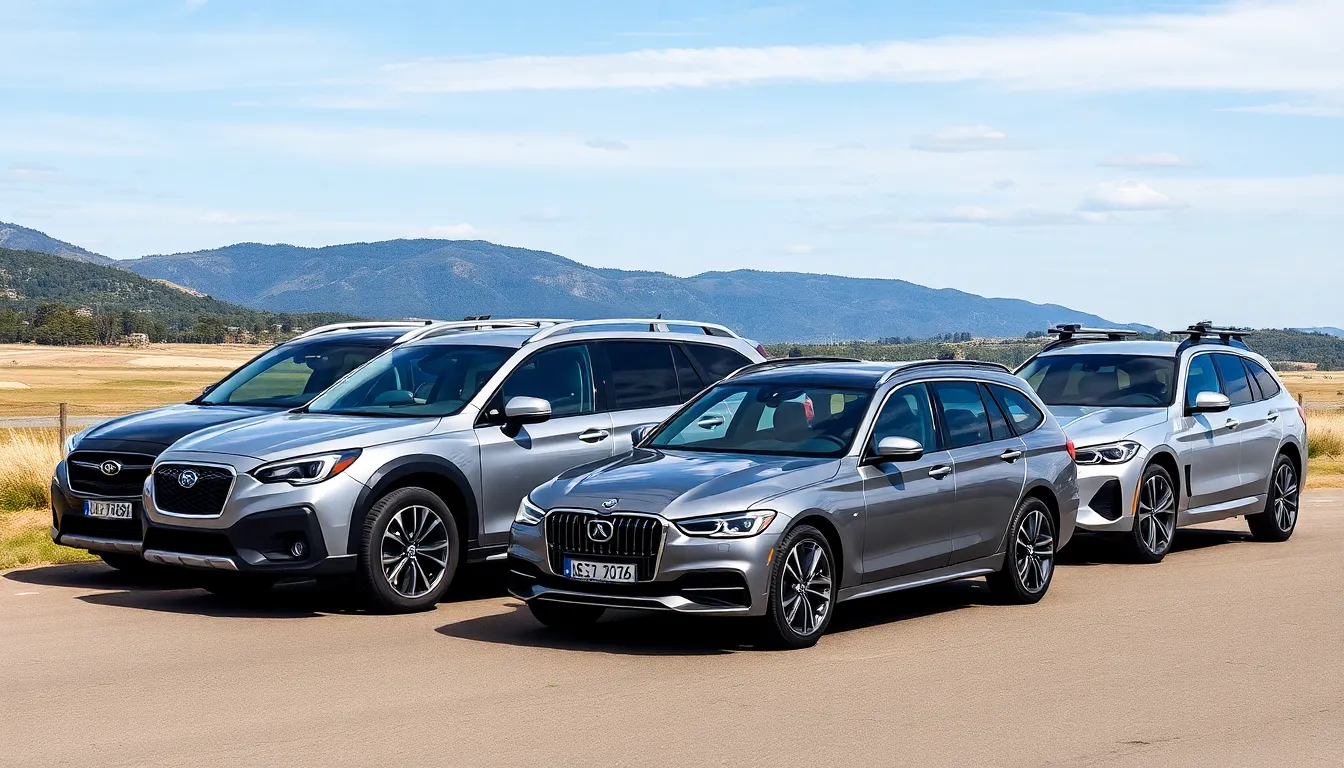
We’ve identified the most compelling wagon cars currently available to help you make an well-informed choice for your next vehicle purchase.
Subaru Outback: The Adventure-Ready Choice
The Subaru Outback combines rugged capability with wagon versatility, featuring standard all-wheel drive and 8.7 inches of ground clearance. Its 2.5-liter BOXER engine delivers 182 horsepower while maintaining impressive fuel economy of 26 mpg city and 33 mpg highway. We appreciate the Outback’s 35.4 cubic feet of cargo space that expands to 75.7 cubic feet with rear seats folded down.
Adventure seekers benefit from the Outback’s X-Mode terrain management system and hill descent control for challenging off-road conditions. The raised ride height provides SUV-like visibility while maintaining wagon-style cargo accessibility through its low liftover height of just 30.7 inches.
Volvo V90: Luxury Meets Practicality
Volvo’s V90 represents the pinnacle of Scandinavian wagon design with its elegant exterior styling and premium interior materials. The turbocharged 2.0-liter four-cylinder engine produces 316 horsepower and 295 lb-ft of torque, delivering refined performance that makes highway cruising effortless. We’re impressed by the V90’s 33.4 cubic feet of standard cargo capacity that grows to 69.5 cubic feet with seats folded.
Safety technology sets the V90 apart with standard Pilot Assist semi-autonomous driving features and City Safety collision avoidance system. The wagon’s optional air suspension system automatically adjusts ride height for optimal comfort and handling across various driving conditions.
Mercedes-Benz E-Class Wagon: Premium Performance
Mercedes-Benz delivers German engineering excellence in the E450 All-Terrain wagon, featuring a turbocharged 3.0-liter inline-six engine with 362 horsepower and mild-hybrid technology. The wagon achieves 0-60 mph acceleration in just 5.2 seconds while maintaining EPA ratings of 22 mpg city and 29 mpg highway. We value the E-Class wagon’s spacious 35 cubic feet of cargo area that expands to 64 cubic feet with rear seats down.
Luxury appointments include standard 12.3-inch dual display screens, premium leather seating surfaces, and advanced driver assistance features like Active Brake Assist and Blind Spot Assist. The wagon’s AIRMATIC suspension system adapts to road conditions automatically for superior ride quality and handling dynamics.
Audi A4 Allroad: All-Weather Capability
Audi’s A4 Allroad offers quattro all-wheel drive performance with increased ground clearance of 6.5 inches for enhanced versatility across seasons. The turbocharged 2.0-liter four-cylinder engine generates 261 horsepower and 273 lb-ft of torque, providing spirited acceleration and confident passing power on highways. We find the Allroad’s 24.2 cubic feet of cargo space practical for daily use, expanding to 58.5 cubic feet with rear seats folded.
Technology features include Audi’s Virtual Cockpit Plus digital instrument cluster and MMI infotainment system with wireless Apple CarPlay connectivity. The wagon’s adaptive damping suspension system automatically adjusts shock absorber firmness based on driving conditions and selected drive modes.
BMW 3 Series Touring: Sporty Handling
BMW’s 3 Series Touring delivers ultimate driving dynamics with precise steering feedback and balanced chassis tuning that makes every corner captivating. The turbocharged 2.0-liter four-cylinder engine produces 255 horsepower and 295 lb-ft of torque, enabling 0-60 mph acceleration in 6.0 seconds flat. We appreciate the Touring’s 31 cubic feet of cargo capacity that increases to 56 cubic feet with rear seats folded down.
Sport-tuned suspension components and optional M Sport package enhance the wagon’s athletic character without compromising ride comfort for daily commuting. The Touring’s 50/50 weight distribution and rear-wheel drive configuration provide exceptional handling balance that enthusiast drivers will appreciate on winding roads.
Why Wagon Cars Are Perfect for Families
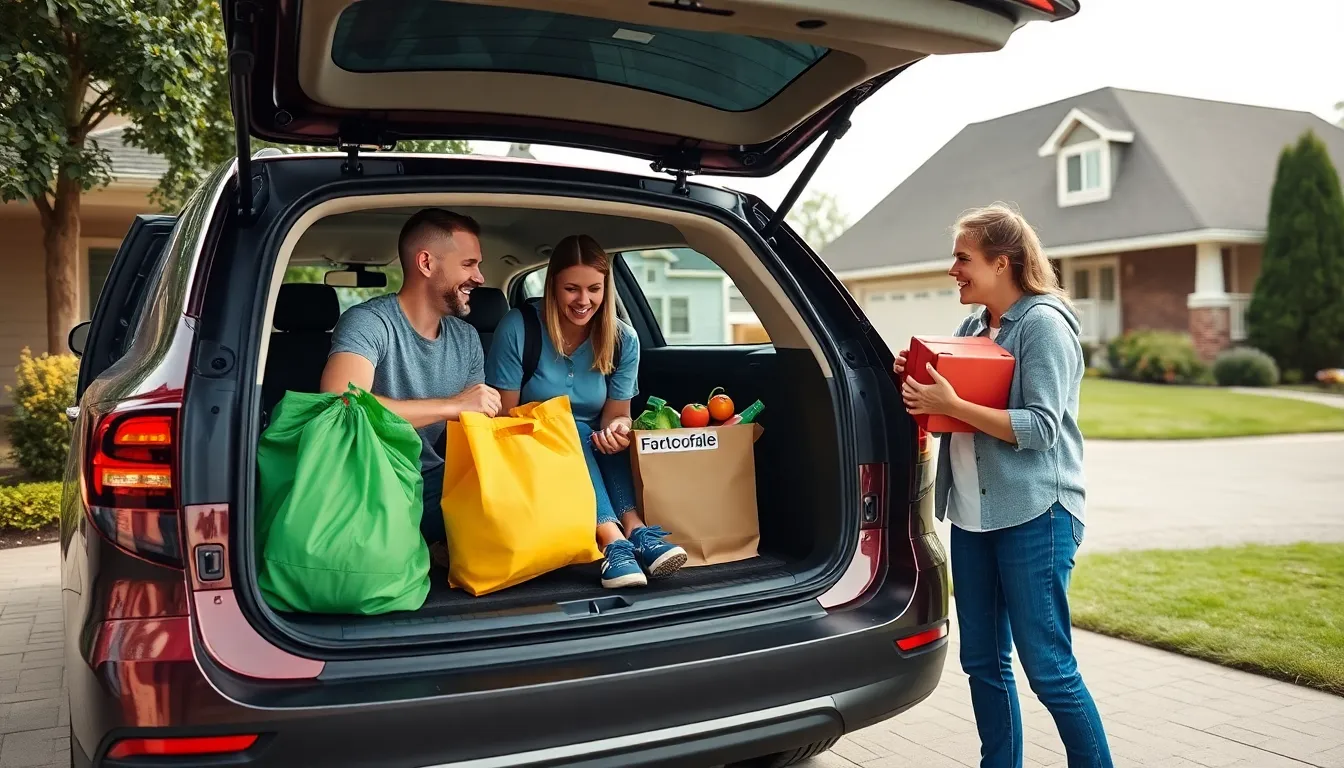
After exploring the top wagon models available today, we’ll examine why these versatile vehicles consistently rank as ideal family transportation options.
Superior Cargo Capacity vs. Sedans
Wagon cars deliver exceptional storage space that traditional sedans simply can’t match. We’re talking about cargo areas that typically range from 30 to 40 cubic feet behind the rear seats, compared to just 12 to 16 cubic feet in most sedans. Folding down the rear seats transforms wagons into moving trucks with up to 75 cubic feet of storage capacity.
This expanded space accommodates everything families need on a daily basis. Strollers, sports equipment like hockey bags and soccer gear, camping supplies, and weekly grocery runs all fit comfortably without compromising passenger seating. We’ve found that wagon owners rarely struggle with the “will it fit” dilemma that sedan drivers face regularly.
Modern wagon designs maximize every inch of available space through clever engineering. Flat load floors eliminate the awkward cargo wells found in many sedans, while squared off rear sections provide more usable volume than sloped sedan trunks.
Easy Loading and Unloading Access
Loading height makes wagon cars significantly more practical than their SUV counterparts for everyday family use. We’re looking at cargo floor heights typically 6 to 12 inches lower than comparable SUVs, which translates to less lifting and strain when loading heavy items like car seats or groceries.
Rear tailgates open to reveal wide, accessible cargo areas that parents can reach without climbing or stretching. Children can easily access their own belongings from the back, promoting independence while reducing parent workload during school dropoffs or sports practices.
Split folding rear seats offer flexible loading configurations that sedans can’t provide. Need to transport both passengers and long items like skis or lumber? We can fold down just one section of the rear seat, maintaining seating for three while creating a pass through cargo area that extends into the cabin.
Safety Ratings and Child-Friendly Features
Top rated wagon models consistently earn five star safety ratings from NHTSA and Top Safety Pick awards from IIHS. We’ve observed that wagons benefit from their lower center of gravity compared to SUVs, reducing rollover risk while maintaining the structural integrity of sedan based platforms.
Advanced driver assistance systems come standard on most modern wagons. Features like automatic emergency braking, blind spot monitoring, and rear cross traffic alert provide extra protection during school runs and busy parking lot navigation that families encounter daily.
Child exact safety features set wagons apart from other vehicle categories. Rear door child locks, window lockouts, and easy access LATCH anchor points for car seats make wagons particularly family friendly. We appreciate that many wagon models include rear window sunshades and climate controls that keep young passengers comfortable during longer trips.
Built in storage compartments throughout the cabin help keep small items organized and out of reach when necessary. Cup holders, door pockets, and console storage provide designated spaces for everything from sippy cups to electronic devices, reducing cabin clutter that can become projectiles during sudden stops.
Wagon Cars vs. SUVs: Making the Right Choice
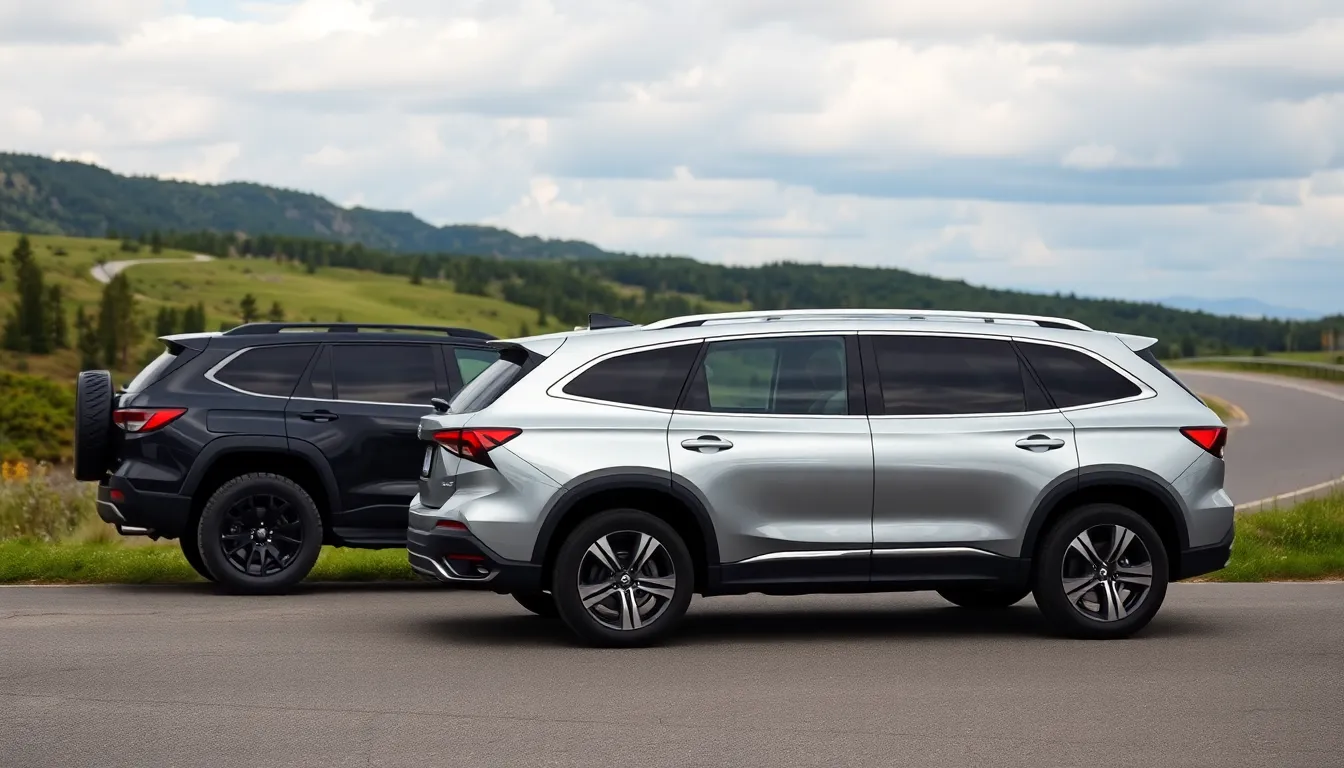
Choosing between wagon cars and SUVs involves weighing practical benefits against lifestyle preferences. We’ll explore three key areas where wagons consistently outperform their taller counterparts.
Fuel Economy Advantages of Wagon Cars
Wagon cars deliver superior fuel efficiency compared to SUVs due to their aerodynamic design and lighter weight. Modern wagon models typically achieve 25-35 MPG combined, while comparable SUVs average 20-28 MPG. The Subaru Outback earns up to 33 MPG highway, significantly outperforming the Honda Pilot’s 27 MPG highway rating.
Lower wind resistance helps wagons cut through air more efficiently than boxy SUV profiles. This aerodynamic advantage translates to reduced engine strain during highway driving. The Mercedes-Benz E-Class Wagon achieves 32 MPG highway, while the GLE SUV manages only 26 MPG under similar conditions.
Reduced vehicle weight contributes to better fuel economy in wagon cars. Most wagons weigh 200-500 pounds less than equivalent SUVs, requiring less energy to accelerate and maintain speed. The BMW 3 Series Touring weighs approximately 400 pounds less than the X3 SUV, directly impacting fuel consumption.
Lower Center of Gravity for Better Handling
Wagon cars provide superior road handling due to their lower center of gravity compared to SUVs. This design characteristic reduces body roll during cornering and improves overall stability. The Audi A4 Allroad sits 2-3 inches lower than the Q5 SUV, creating a more planted driving experience.
Enhanced cornering ability makes wagon cars more enjoyable to drive on winding roads. The lower stance allows for sharper turns without excessive lean or loss of control. Professional driving tests consistently show wagons maintaining higher speeds through slalom courses than SUVs.
Better weight distribution in wagon cars creates more predictable handling characteristics. The extended cargo area keeps weight closer to the ground, improving traction and stability. This advantage becomes particularly noticeable during emergency maneuvers or sudden lane changes.
More Affordable Purchase and Maintenance Costs
Wagon cars typically cost $2,000-$8,000 less than comparable SUVs at initial purchase. The Volvo V90 starts around $52,000, while the similar XC90 SUV begins at $57,000. This price difference extends across most wagon and SUV comparisons within the same brand.
Lower maintenance expenses make wagon cars more economical long term ownership choices. Smaller wheels, simpler suspension systems, and reduced complexity result in cheaper repair bills. Tire replacement costs average $600-$800 for wagons versus $900-$1,200 for SUVs.
Insurance premiums remain lower for wagon cars due to reduced rollover risk and theft rates. Insurance companies typically charge 5-15% less for wagon coverage compared to SUVs. The lower profile and perceived safety benefits translate to measurable savings over the vehicle’s ownership period.
The History and Evolution of Wagon Cars
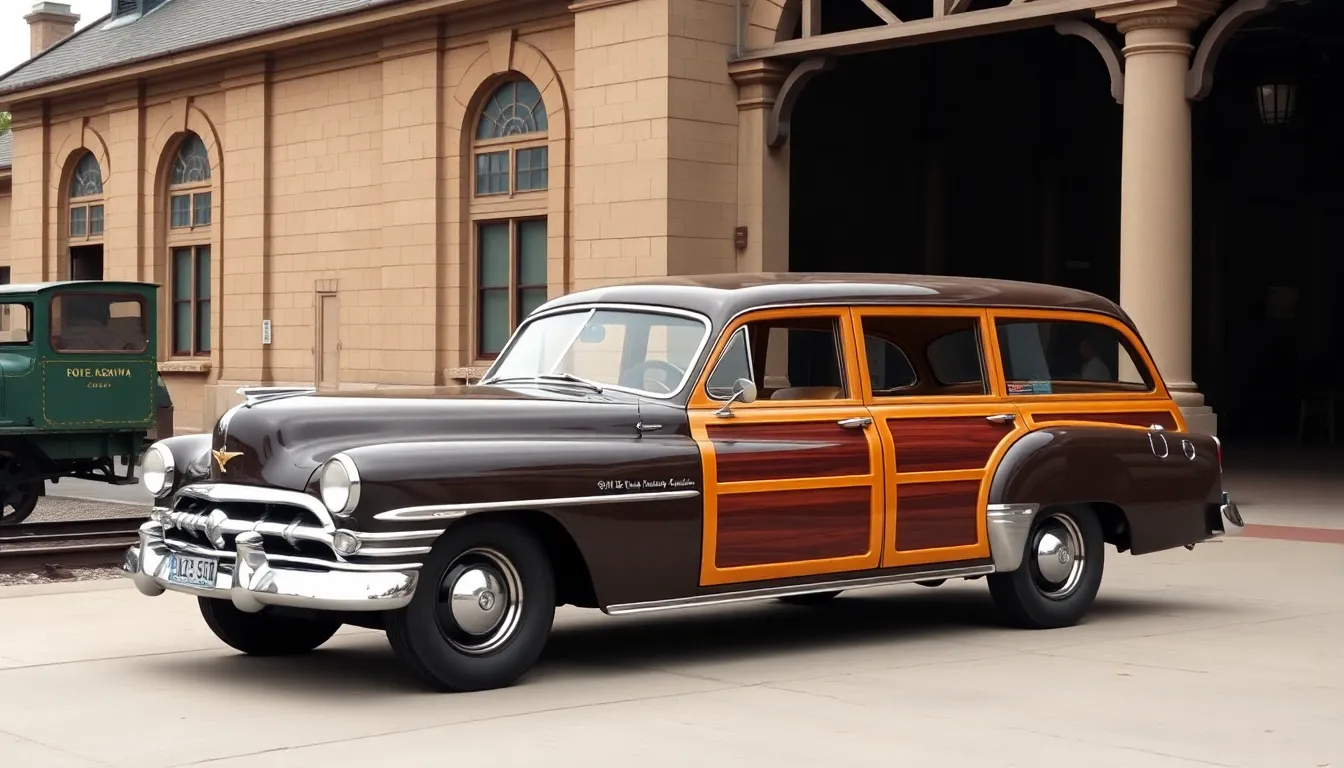
Station wagons have traveled a fascinating journey from utilitarian workhorses to sophisticated family vehicles. Understanding their evolution helps us appreciate why these versatile cars remain relevant in today’s automotive industry.
Origins in the Early 20th Century
Early station wagons emerged in the 1910s as practical vehicles designed to transport passengers and luggage to railway stations. Ford introduced one of the first production models in 1929, featuring a wooden body mounted on a truck chassis. These vehicles served rural communities and businesses that needed both passenger seating and cargo capacity in a single vehicle.
Woody wagons dominated the market through the 1930s and 1940s, with manufacturers like Chrysler, Buick, and Plymouth creating elegant models featuring genuine wood paneling and craftsmanship. Construction methods relied heavily on skilled woodworkers who hand built each body panel using ash, maple, and birch materials. Popular models included the Ford Country Squire and Chrysler Town & Country, which established the foundation for modern wagon design principles.
Commercial applications drove early wagon development, as businesses needed vehicles that could carry both people and equipment efficiently. Railway companies often purchased fleets of these wagons to shuttle passengers between hotels and train stations. Agricultural communities embraced wagons for their ability to transport families to town and haul farm supplies on the return trip.
Golden Age of American Station Wagons
Post Industry War II prosperity launched the golden age of American station wagons from 1950 to 1975. Suburban families discovered that wagons perfectly matched their lifestyle needs, combining sedan comfort with unprecedented cargo space. Sales figures reached their peak in 1973 when wagons represented nearly 15% of all passenger car sales in America.
Manufacturing innovations transformed wagon construction during this era, with steel bodies replacing wood frameworks by the early 1950s. Chevrolet’s Nomad, introduced in 1955, showcased sleek styling that elevated wagons from purely functional vehicles to desirable family cars. Two door and four door configurations gave families options based on their exact needs and preferences.
Cultural significance grew as wagons became symbols of American family life and suburban prosperity. Television shows and movies featured station wagons as the quintessential family vehicle, reinforcing their position in popular culture. Marketing campaigns targeted growing suburban demographics, emphasizing how wagons enabled family adventures, camping trips, and daily errands with equal capability.
Popular models from this golden age included the Ford Country Squire, Chevrolet Impala wagon, Plymouth Fury wagon, and Buick Estate Wagon. These vehicles typically offered seating for eight passengers and cargo areas exceeding 100 cubic feet with seats folded. Power options ranged from economical six cylinder engines to powerful V8s that delivered impressive towing capacity for family trailers and boats.
European Influence on Modern Wagon Design
European manufacturers revolutionized wagon design starting in the 1980s by prioritizing sophistication, fuel efficiency, and driving dynamics over pure size. Mercedes Benz, BMW, Audi, and Volvo created estate cars that combined luxury sedan refinement with practical cargo capacity. These vehicles established new benchmarks for build quality, safety features, and technological advancement.
Swedish safety innovations from Volvo significantly influenced global wagon development, introducing features like reinforced roof pillars, side impact protection, and advanced crumple zones. Volvo’s 240 and 740 wagon models earned reputations for exceptional durability and family protection throughout the 1980s and 1990s. Safety ratings consistently placed European wagons among the highest performing vehicles in crash tests.
German engineering excellence elevated wagon performance standards through models like the BMW 5 Series Touring and Mercedes E Class wagon. These vehicles delivered sports car handling characteristics while maintaining generous cargo capacity and luxurious interiors. All wheel drive systems became standard features, improving traction and stability in various weather conditions.
Modern wagon design principles from European manufacturers emphasize aerodynamic efficiency, advanced driver assistance systems, and premium materials throughout the cabin. Contemporary models achieve fuel economy ratings between 25 and 35 MPG while offering cargo capacities ranging from 30 to 75 cubic feet. Technology integration includes infotainment systems, smartphone connectivity, and semi autonomous driving features that define today’s premium wagon market.
Best Used Wagon Cars for Budget-Conscious Buyers
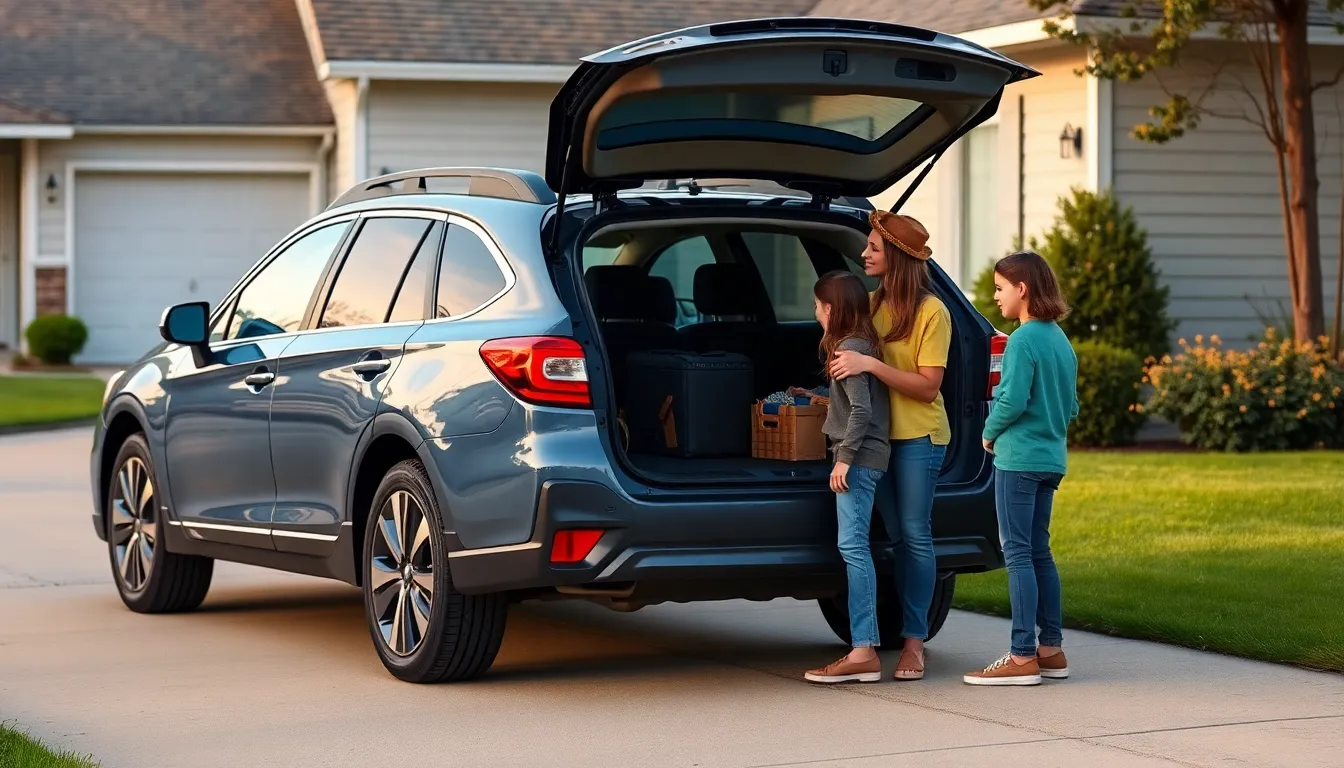
Budget-savvy shoppers can find exceptional value in the used wagon car market, where practical family vehicles offer impressive features at accessible prices. We’ve identified the most reliable pre-owned wagon options that deliver outstanding performance without straining your wallet.
Reliable Models Under $15,000
2010-2015 Subaru Outback models consistently rank among our top budget wagon recommendations, offering proven all-wheel drive capability and excellent reliability scores. Finding examples with 80,000-120,000 miles in the $12,000-$15,000 range provides years of dependable family transportation. These models feature standard symmetrical all-wheel drive, spacious cargo areas measuring 35.5 cubic feet, and impressive ground clearance for light off-road adventures.
2008-2012 Volkswagen Jetta SportWagen vehicles deliver European refinement at surprisingly affordable prices, typically available for $8,000-$13,000 depending on mileage and condition. Turbocharged four-cylinder engines provide peppy acceleration while achieving 30+ MPG highway fuel economy. Interior space rivals larger SUVs with 32.8 cubic feet of cargo capacity and comfortable seating for five passengers.
2006-2011 Volvo V70 wagons offer luxury features and renowned safety ratings at budget-friendly prices between $7,000-$14,000. Swedish engineering emphasizes occupant protection with advanced airbag systems and reinforced passenger compartments. Cargo space reaches an impressive 71.1 cubic feet with rear seats folded, making these wagons ideal for large families or weekend adventures.
2007-2012 Dodge Magnum models provide American muscle car performance in wagon form, available for $9,000-$14,000 in today’s used car market. V6 and V8 engine options deliver spirited acceleration while maintaining respectable fuel economy ratings. Interior versatility includes 27.2 cubic feet of cargo space and optional third-row seating configurations.
What to Look for When Buying Used
Service records represent the most critical factor when evaluating any used wagon, as consistent maintenance schedules indicate responsible ownership and predict future reliability. Request documentation showing oil changes every 3,000-5,000 miles, transmission services, and major component replacements. Missing maintenance records often signal potential mechanical issues that could become expensive problems.
Cargo area inspection reveals important clues about previous usage patterns and overall vehicle condition. Examine the rear loading floor for excessive wear, water damage, or cargo tie-down anchor damage that might indicate heavy hauling or poor treatment. Rust spots around the tailgate seals frequently develop into larger corrosion problems requiring costly repairs.
All-wheel drive systems in models like the Subaru Outback and Volvo V70 require exact attention during test drives and inspections. Verify smooth engagement between driving modes without grinding noises or vibrations that suggest worn components. Differential fluid changes every 30,000-60,000 miles prevent expensive drivetrain failures common in neglected AWD systems.
Electronic components including power tailgates, infotainment systems, and climate controls should function properly during your inspection process. Test all electrical features multiple times, as replacement parts for older wagon models can be expensive and difficult to source from dealerships.
Maintenance Considerations for Older Wagons
European wagon models typically require specialized maintenance procedures and premium parts that increase ownership costs compared to domestic alternatives. Volvo and Volkswagen wagons need timing belt replacements every 80,000-105,000 miles, costing $800-$1,200 at independent shops. Ignoring these critical services can result in catastrophic engine damage requiring complete powertrain replacement.
Subaru Outback maintenance focuses on head gasket monitoring, particularly in 2010-2012 model years known for this common issue. Watch for coolant leaks, white exhaust smoke, or overheating symptoms that indicate developing head gasket problems. Prevention costs around $1,500-$2,500, while delayed repairs can destroy the entire engine.
Suspension components in wagon cars experience additional stress from cargo loading and family use, requiring more frequent replacement than sedan counterparts. Budget $500-$1,000 annually for struts, springs, and related components to maintain proper ride quality and handling characteristics. Regular inspections prevent minor issues from developing into major safety concerns.
Transmission maintenance becomes increasingly important as wagon mileage accumulates, particularly in all-wheel drive models with complex drivetrain systems. Change transmission fluid every 60,000-80,000 miles using manufacturer-specified fluids to prevent costly internal damage. Aftermarket fluids may void warranties and cause shifting problems in sensitive electronic transmissions.
Wagon Cars for Different Lifestyles
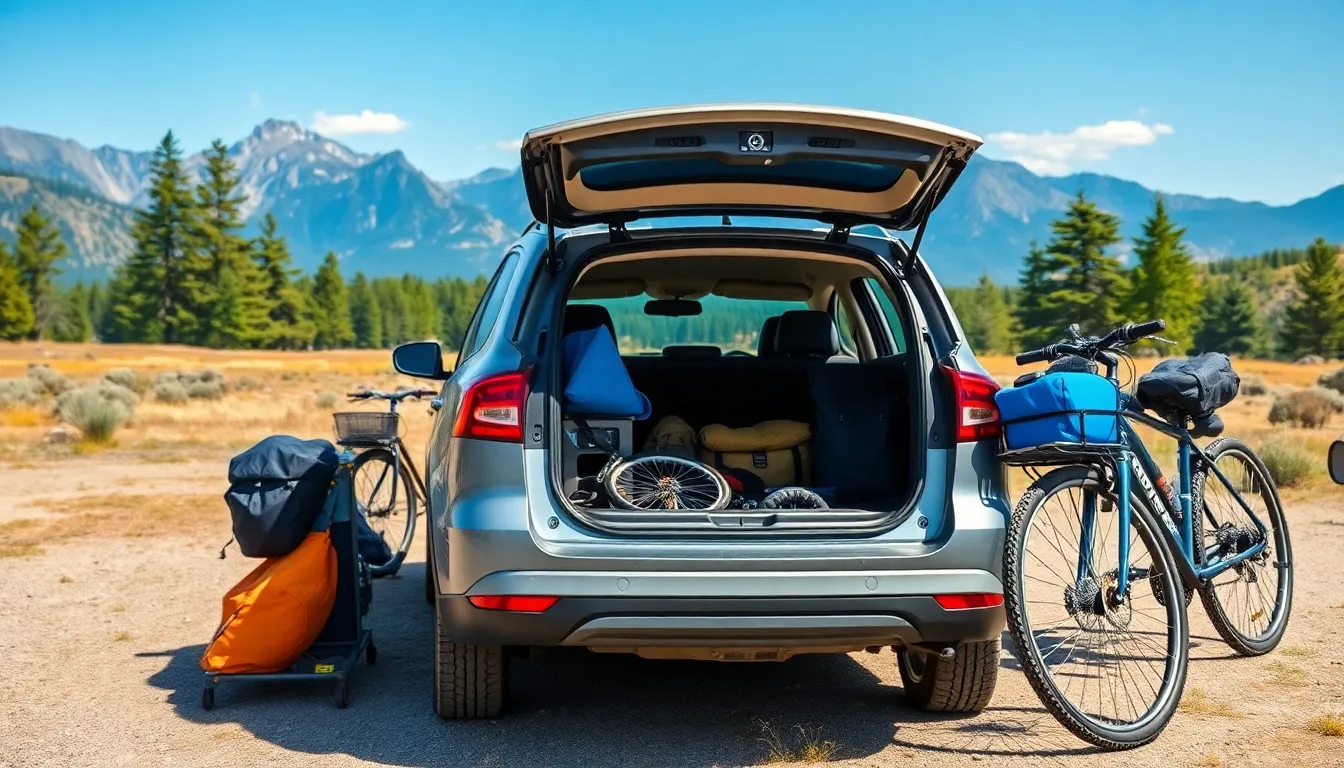
Wagon cars excel across diverse lifestyle scenarios, offering customized answers that adapt to exact needs and preferences. Different drivers find unique advantages in wagon ownership based on their daily activities and long-term transportation goals.
Outdoor Enthusiasts and Adventure Seekers
Adventure-ready wagon models transform weekend getaways into seamless experiences. The Subaru Outback leads this category with 8.7 inches of ground clearance and standard all-wheel drive, making it ideal for camping trips and mountain excursions. Cargo capacity reaches 75.7 cubic feet with rear seats folded, easily accommodating camping gear, bikes, and outdoor equipment.
Specialized features enhance outdoor functionality across multiple wagon models. Roof rail systems support kayaks, surfboards, and cargo boxes up to 165 pounds on most models. The Audi A4 Allroad includes raised ride height and quattro all-wheel drive, providing confident performance on gravel roads and hiking trail access points.
Interior protection systems keep adventure gear organized and contained. Waterproof cargo liners and rubber floor mats protect upholstery from muddy boots and wet equipment. Climate control reaches every seating area, ensuring comfort during long drives to remote destinations.
Urban Professionals with Active Lifestyles
City-focused wagon cars balance professional appearance with recreational versatility. The BMW 3 Series Touring delivers executive-level sophistication while accommodating cycling gear, gym equipment, and work supplies in its 50 cubic feet of cargo space. Premium materials and advanced infotainment systems maintain professional standards during business travel.
Fuel efficiency becomes crucial for daily commuting and weekend adventures. Most European wagon models achieve 30+ MPG in mixed driving conditions, reducing fuel costs for professionals who drive frequently. The Volkswagen Golf SportWagen delivers 36 MPG highway while providing 66.5 cubic feet of maximum cargo capacity.
Technology integration supports both work and leisure activities seamlessly. Built-in WiFi hotspots keep passengers connected during road trips, while smartphone integration manages navigation, music, and hands-free communication. Wireless charging pads and multiple USB ports accommodate multiple devices simultaneously.
Large Families Needing Maximum Space
Seven-seat wagon configurations provide SUV-level passenger capacity with superior fuel economy. The Mercedes-Benz E-Class Wagon offers optional third-row seating for children, creating flexible arrangements for carpools and family outings. Interior space exceeds 64 cubic feet behind the first row when all rear seats fold flat.
Family-friendly features prioritize safety and convenience throughout daily use. Advanced driver assistance systems include automatic emergency braking, blind spot monitoring, and rear cross-traffic alerts standard on most models. Sliding doors aren’t available, but wide-opening rear hatches provide easy access for loading strollers and sports equipment.
Storage answers accommodate the complex needs of multi-child households efficiently. Under-floor compartments hide valuable items and organize frequently used supplies. Cup holders, charging ports, and individual climate controls serve each passenger zone, reducing conflicts during longer family trips.
Future of Wagon Cars in the Electric Age
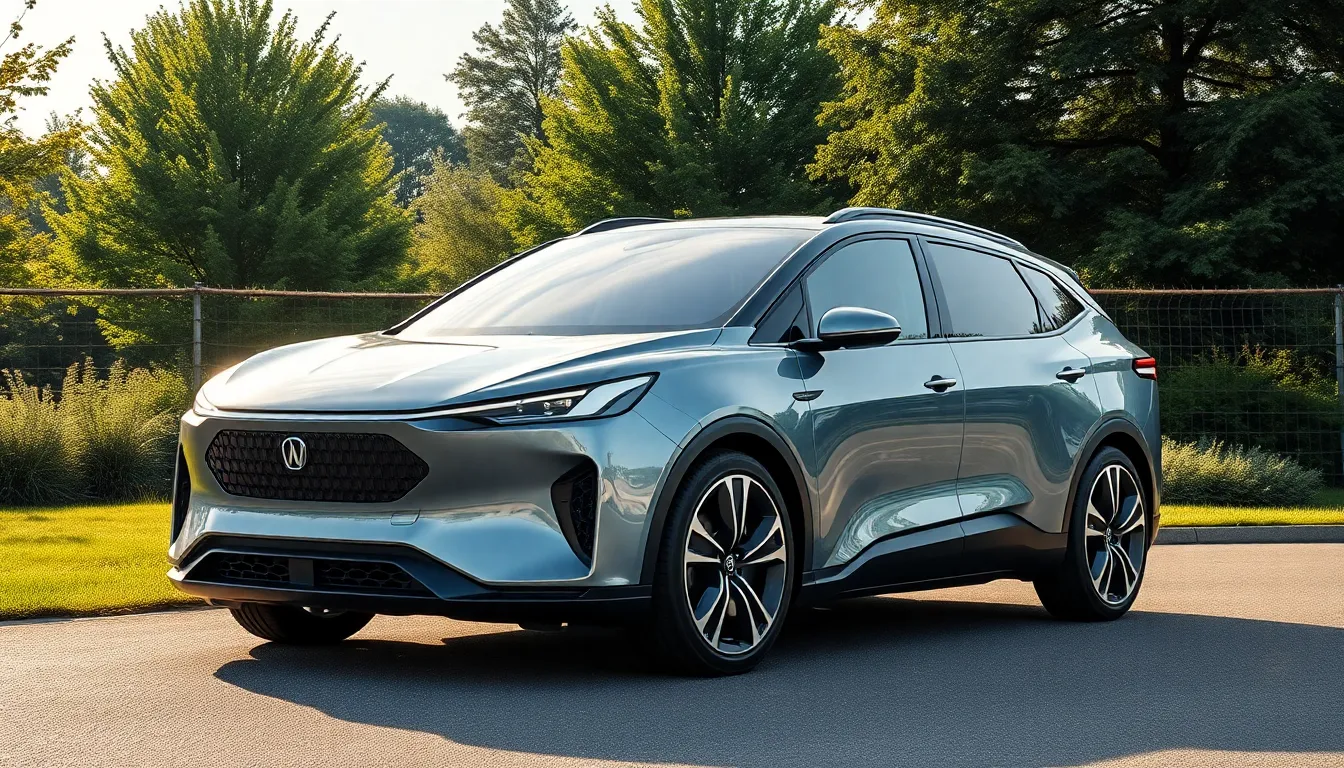
Electric powertrains are revolutionizing the wagon car segment, bringing new possibilities for efficiency and design. We’re witnessing a transformation that promises to maintain the practicality we love while improving performance and environmental responsibility.
Electric Wagon Models Coming Soon
BMW iX Touring leads the upcoming electric wagon revolution with its anticipated 2025 launch. This model will deliver over 300 miles of range while maintaining the signature cargo capacity that defines wagon utility. German engineering meets electric innovation in this sophisticated package that promises to set new benchmarks for the segment.
Mercedes EQE Estate represents luxury electrification at its finest, featuring advanced battery technology and premium interior appointments. We expect this model to offer approximately 280 miles of range with rapid charging capabilities that make long family trips practical. The sleek aerodynamic profile enhances both efficiency and visual appeal.
Volvo EV90 Estate continues the Swedish brand’s safety legacy while embracing full electrification. Early specifications suggest a dual motor setup delivering all wheel drive capability with over 400 horsepower. Safety innovations will include next generation driver assistance systems powered by advanced sensors and artificial intelligence.
Audi e-tron GT Avant combines sports car performance with wagon practicality in an electrified package. This upcoming model promises 0 to 60 mph acceleration in under 4 seconds while providing substantial cargo space for daily versatility. Premium materials and cutting edge technology will define the interior experience.
Family-Focused Electric Options
Polestar 3 Estate targets families seeking sustainable transportation without compromising space or features. The minimalist Scandinavian design philosophy extends to an intuitive interface that simplifies the electric driving experience. We anticipate over 300 miles of range with fast charging capabilities that reduce travel anxiety.
Genesis GV70 Wagon brings luxury and electric efficiency to the premium wagon segment. Korean engineering excellence delivers sophisticated ride quality with advanced battery management systems. The spacious interior accommodates families while maintaining the elegant styling Genesis is known for.
Hybrid Options Currently Available
Toyota Venza delivers immediate hybrid efficiency with 39 MPG combined fuel economy in a practical wagon like crossover format. All wheel drive capability enhances versatility while the spacious cargo area provides 28.8 cubic feet of storage space. Advanced safety features include Toyota Safety Sense 2.0 as standard equipment.
Subaru Outback Hybrid combines the brand’s legendary all weather capability with improved fuel efficiency. The 2.5 liter hybrid system produces 260 horsepower while achieving an estimated 33 MPG combined rating. Standard Symmetrical All Wheel Drive maintains traction in challenging conditions.
Volvo V60 Recharge offers plug in hybrid technology with 22 miles of electric only driving range. The combination of electric and gasoline power delivers 455 total horsepower for impressive acceleration. Cargo capacity remains substantial at 23.2 cubic feet with the rear seats in place.
BMW 330e Touring provides luxury hybrid performance with 25 miles of electric driving range for daily commuting. The 2.0 liter turbocharged engine works with an electric motor to produce 288 total horsepower. Intelligent energy management optimizes efficiency based on driving patterns and route planning.
Currently Available Mild Hybrid Systems
Mercedes E-Class All Terrain incorporates 48 volt mild hybrid technology for enhanced fuel efficiency. The system provides electric boost during acceleration while recovering energy during braking and coasting. This technology improves fuel economy by approximately 10 percent compared to conventional engines.
Audi A4 Allroad features mild hybrid assistance that enhances the 2.0 liter turbocharged engine’s performance. The 12 volt system supports start stop functionality and provides additional torque during acceleration. Real industry fuel economy improvements range from 0.5 to 1.5 MPG depending on driving conditions.
How Electrification Will Transform Wagon Design
Battery Integration will fundamentally reshape wagon architecture by lowering the center of gravity and creating new packaging opportunities. Floor mounted battery packs provide structural benefits while freeing up traditional engine bay space for additional cargo storage. We expect future wagons to offer even more interior volume than current models.
Aerodynamic Optimization becomes crucial for maximizing electric range, leading to sleeker profiles and advanced airflow management. Active grille shutters and underbody panels will become standard features to reduce drag coefficient. These improvements can increase range by 10 to 15 percent compared to conventional designs.
Interior Space Maximization benefits from electric powertrains that eliminate traditional transmission tunnels and exhaust systems. Front trunk storage becomes possible when electric motors replace internal combustion engines. Flexible seating arrangements and modular storage answers will enhance wagon versatility.
Advanced Technology Integration accelerates with electric platforms that support over the air updates and enhanced connectivity. Large touchscreen interfaces will manage everything from climate control to charging schedules and route planning. Autonomous driving features will advance more rapidly in electric models due to improved sensor integration capabilities.
Weight Distribution improves significantly with battery packs positioned low in the chassis structure. This placement enhances handling characteristics while maintaining the stable ride quality that wagon buyers expect. Improved weight balance will make electric wagons more responsive and captivating to drive.
Charging Infrastructure Considerations will influence wagon design through integrated charging ports and cable management systems. Fast charging capabilities of 150kW or higher will become standard to support long distance family travel. Home charging answers will be optimized for overnight replenishment during daily use patterns.
Conclusion
Wagon cars represent the perfect intersection of practicality and sophistication in today’s automotive industry. Whether you’re drawn to their superior cargo capacity electric future or budget-friendly used options these vehicles deliver unmatched versatility for modern families.
We’ve explored how wagons excel across different lifestyles from adventure-seeking outdoor enthusiasts to urban professionals who need weekend versatility. Their evolution into the electric age promises even greater efficiency while maintaining the core benefits that make them so appealing.
The wagon segment continues to innovate with manufacturers investing in hybrid and fully electric models that’ll shape the future of family transportation. For drivers seeking a vehicle that doesn’t compromise between functionality and driving enjoyment wagon cars remain an outstanding choice that’s worth serious consideration in your next vehicle purchase.
Frequently Asked Questions
What is a station wagon and how is it different from SUVs and sedans?
A station wagon combines the best elements of sedans and SUVs, featuring an extended roofline and distinctive silhouette that maximizes interior space. Unlike SUVs, wagons have lower ground clearance for better road handling and fuel efficiency. Compared to sedans, they offer significantly more cargo space (25-75 cubic feet) and easier loading thanks to their flat load floors and lower loading heights.
Why are wagon cars better for families than other vehicle types?
Wagon cars excel for families due to their superior cargo capacity (30-40 cubic feet typically), lower cargo floor heights that make loading easier than SUVs, and excellent safety ratings with advanced driver assistance systems. Many models offer third-row seating options and built-in storage compartments that help keep the cabin organized, making them ideal for family transportation needs.
How do wagon cars compare to SUVs in terms of fuel economy?
Wagon cars deliver superior fuel efficiency compared to SUVs, achieving 25-35 MPG versus 20-28 MPG for SUVs. This advantage comes from their more aerodynamic design and lighter weight. Wagons also offer better road handling due to their lower center of gravity, providing enhanced stability and cornering ability while maintaining practical cargo space.
What are the best wagon cars available today?
The top wagon models include the Subaru Outback for rugged capability, Volvo V90 for luxury and safety, Mercedes-Benz E-Class Wagon for performance, Audi A4 Allroad for all-weather capability, and BMW 3 Series Touring for sporty driving dynamics. Each offers unique attributes like advanced technology, impressive cargo capacity, and specialized features for different driving needs.
Are there good budget options for used wagon cars?
Yes, reliable used wagons under $15,000 include the Subaru Outback, Volkswagen Jetta SportWagen, Volvo V70, and Dodge Magnum. When buying used, check service records, cargo area condition, and electronic component functionality. Be aware that European models may require specialized maintenance and parts, which can increase ownership costs over time.
What does the future hold for electric wagon cars?
The electric wagon market is expanding with upcoming models like the BMW iX Touring, Mercedes EQE Estate, Volvo EV90 Estate, and Audi e-tron GT Avant. These promise impressive range and advanced features. Current hybrid options like the Toyota Venza and Subaru Outback Hybrid already combine fuel efficiency with wagon practicality, bridging the gap to full electrification.
How do wagon cars adapt to different lifestyles?
Wagons cater to various lifestyles effectively. Outdoor enthusiasts benefit from models like the Subaru Outback with adventure-ready features and gear storage. Urban professionals appreciate sophisticated options like the BMW 3 Series Touring that balance city driving with recreational versatility. Large families can choose seven-seat configurations like the Mercedes-Benz E-Class Wagon for passenger capacity and efficiency.









